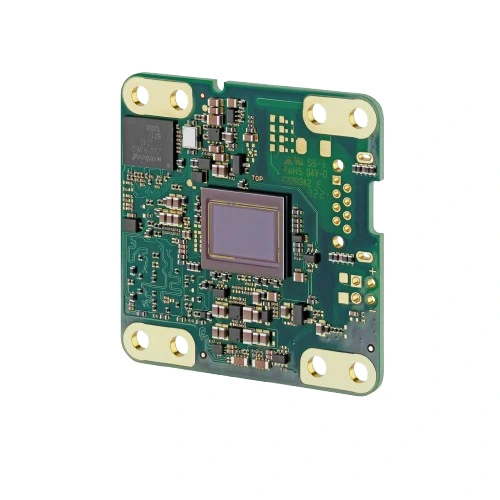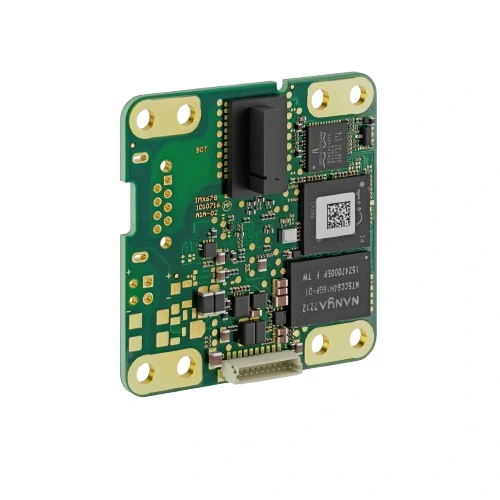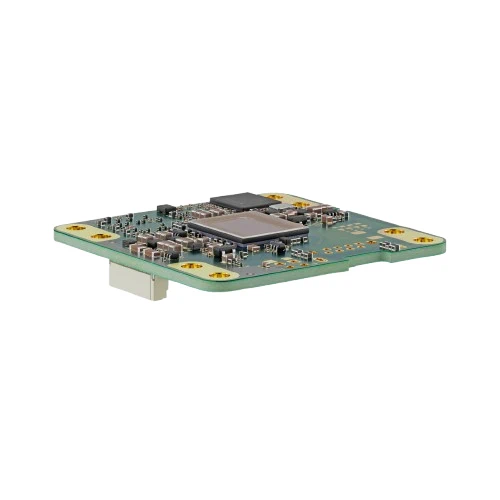IDS Imaging GV-53F2LE-MB — 5 MP Global-Shutter GigE Board Camera
Product Overview
IDS Imaging GV-53F2LE-MB 5 MP global-shutter GigE board camera delivers crisp 2472 × 2064 images for fast, space-constrained OEM designs. Built around Sony’s IMX568 (1/1.8″, 2.74 µm), it suppresses motion artifacts and preserves fine detail. The compact 45 × 45 × 10 mm board with 12–24 V input and low mass integrates easily in robotics, instruments, and embedded frames. Hardware I/O for trigger and strobe, plus I²C and GPIO, simplify deterministic control. Exposure from very short to multi-second, 12-bit output, and Precision Time Protocol support consistent results across multi-camera systems. Offered in color and mono versions.
IDS Imaging GV-53F2LE-MB 5 MP global-shutter GigE board camera turns advanced features into practical gains on the line. Hardware trigger and 3.3 V flash sync deliver tight strobe timing for freeze-frame inspection. Region of Interest and decimation help push effective frame rates or reduce bandwidth when networks are crowded. PTP aligns exposure across multiple cameras; GPIO and I²C simplify peripheral control. Wide exposure range, 12-bit pixel formats, and robust thermal headroom support stable imaging in variable light and compact housings. Choose color for accurate rendering or mono for maximum sensitivity and measurement fidelity.
Why IDS Imaging GV-53F2LE-MB?
Choose IDS Imaging GV-53F2LE-MB when you need a compact, board-level, global-shutter 5 MP GigE camera that captures sharp images of fast-moving parts, fits tight OEM spaces, and plays nicely with automation. Deterministic trigger/flash I/O, PTP time sync, ROI/decimation, and 12-bit output turn clean imaging into a predictable, controllable part of your process—without bloating network load or system complexity.
What problem does it solve?
Production lines hate blur, timing drift, and bandwidth bottlenecks. GV-53F2LE-MB tackles all three: the global shutter freezes motion; precise hardware trigger and flash output lock exposure to your strobe; PTP aligns multiple cameras so measurements agree across stations; and ROI/decimation trim data so your network isn’t the bottleneck. Its board-level form factor slides into cramped housings, while robust imaging depth preserves fine detail for inspection, robotics, and metrology—turning inconsistent captures into reliable, repeatable results.



